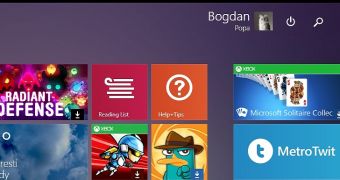Windows 8.1 Update can be installed on devices with smaller disks as well thanks to a new technology developed by Microsoft for this new OS version.
The new deployment option, which is simply called Windows Image Boot (WIMBoot), was specifically designed to be installed on devices with UEFI and SSDs with capacities of down to 16 GB, in order to make sure that users still have enough storage space to store their files and install apps.
Basically, WIMBoot, which is available on all SKUs of Windows 8.1 Update, no longer extracts all files from an image files, but instead uses point files to keep everything compressed in the original WIM. This way, users are provided with the same folder structure, but under the hood, all files are compressed and thus help save space on your device.
This can only be done manually right now, and it all comes down to a bit more complex process, but in the end, you could end up with 12 GB of free space on a 16 GB unit.
“Effectively, you copy the WIM file into a separate ‘images’ partition (just like you would for a recovery image), then use DISM to create pointer files from the standard C: operating system volume into the WIM file. These pointer files are completely transparent, and Windows knows how to boot the operating system (keeping all the files in the WIM) when configured in this setup,” Microsoft explains.
On a 16 GB drive, Windows 8.1 usually takes up to 9 GB of the available space, so users have only 7 GB to store files and install apps. Using the new WIMBoot system, on the other hand, the Windows installation could take around 3 GB and thus leave you with approximately 12 GB of free disk space.
And this isn’t the only advantage of the WIM file. Microsoft says that it can also be used as a recovery image, just in case your Windows installation is broken down and you need to quickly repair it.
Redmond says that more tablet devices pre-configured to use WIMBoot will hit the market in the coming months, in an effort to provide users with more affordable units also offering enough storage capacity for files and apps. At this point, a 32 GB Surface 2 tablet has only 18 GB of free space, while the 64 GB model comes with 47 GB of available disk space.

 14 DAY TRIAL //
14 DAY TRIAL //